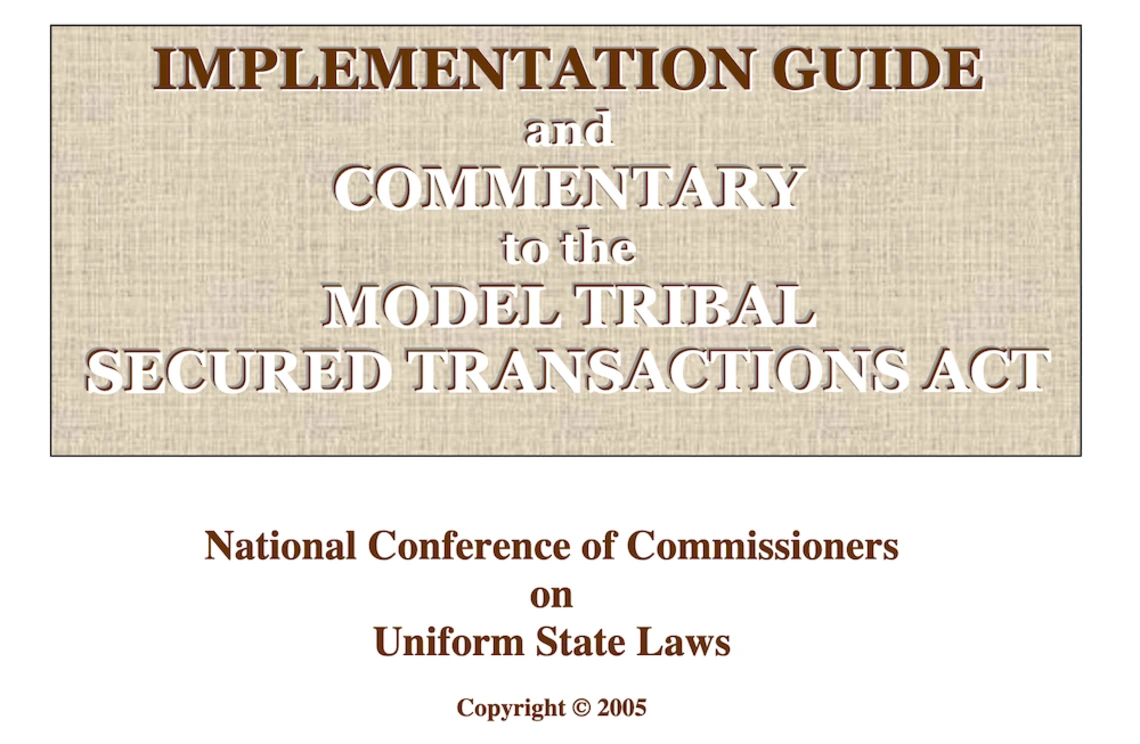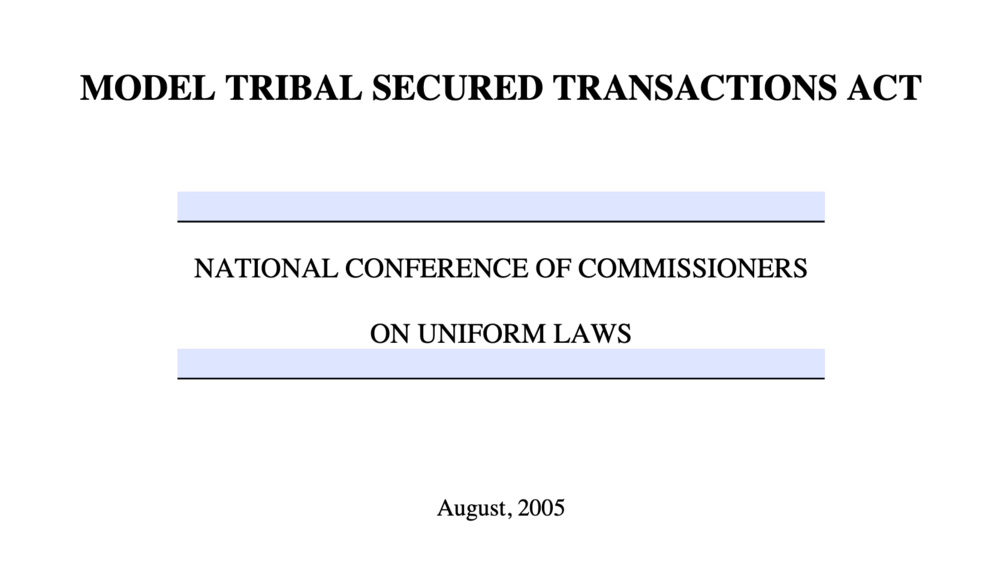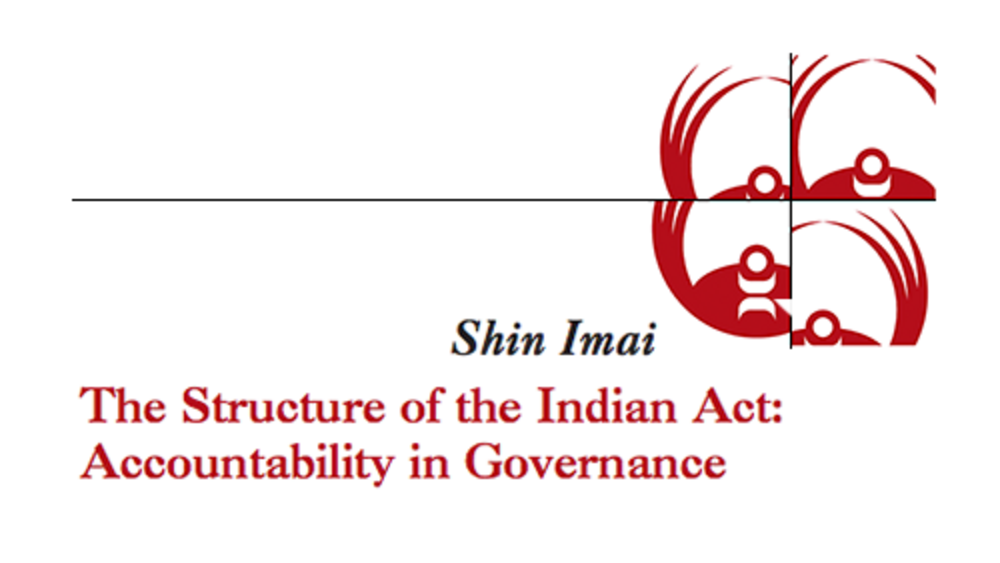This Implementation Guide and Commentary to the Model Tribal Secured Transactions Act (hereinafter “Act” or “MTA”) drafted by the National Conference of Commissioners on Uniform State Laws (“NCCUSL”) and the Federal Reserve Bank of Minneapolis was developed for three purposes: (1) to assist tribal legislatures in their review, adaptation and enactment of the Act; (2) to facilitate the use and understanding of the Act by tribal judges, legal counsel and individuals promoting business development in Indian Country; and (3) to assist non-tribal lenders and businesses in understanding the similarities and differences between the Act and corresponding provisions of the Uniform Commercial Code (“UCC”).
The Act is derived in large part from Revised Article 9 of the UCC1 as well as some sections of UCC Articles 1, 2 and 8 to ensure a material degree of harmonization between the law of different tribes, and between tribes and states. In order to accommodate tribal business, legal and cultural environments, the Act differs from UCC Article 9 in a number of respects. However, the core principles, terminology and processes that inform the Act are sufficiently similar to the UCC to ensure that tribal and non-tribal practitioners will feel at ease working within both tribal and state jurisdictions.
Section I of this Implementation Guide discusses secured transactions law generally, and provides background about the NCCUSL Model Tribal Secured Transactions Act initiative. Section II contains a list of special considerations and recommendations for tribal legislatures, tribal courts and legal practitioners, including section subheadings and numbering; the use of references to the Official Text and Commentary of the UCC and other state law; other tribal laws to be considered when adopting the Act, and the role of tribal customs and traditions. Section III contains a section-by-section commentary of the Act’s provisions. Section IV discusses filing systems and options for tribes to consider. Section V discusses the importance of making tribal laws and court decisions readily accessible to the public. Section VI contains suggestions for transitional rules, including options depending on the tribal jurisdiction’s current laws. Finally, Section VII contains a model joint powers filing system agreement, and a model tribal filing system regulation.
Additional Information
National Conference of Commissioners on Uniform State Laws (2005). Implementation Guide and Commentary to the Model Tribal Secured Transactions Act. National Conference of Commissioners on Uniform State Laws. Chicago, IL.




